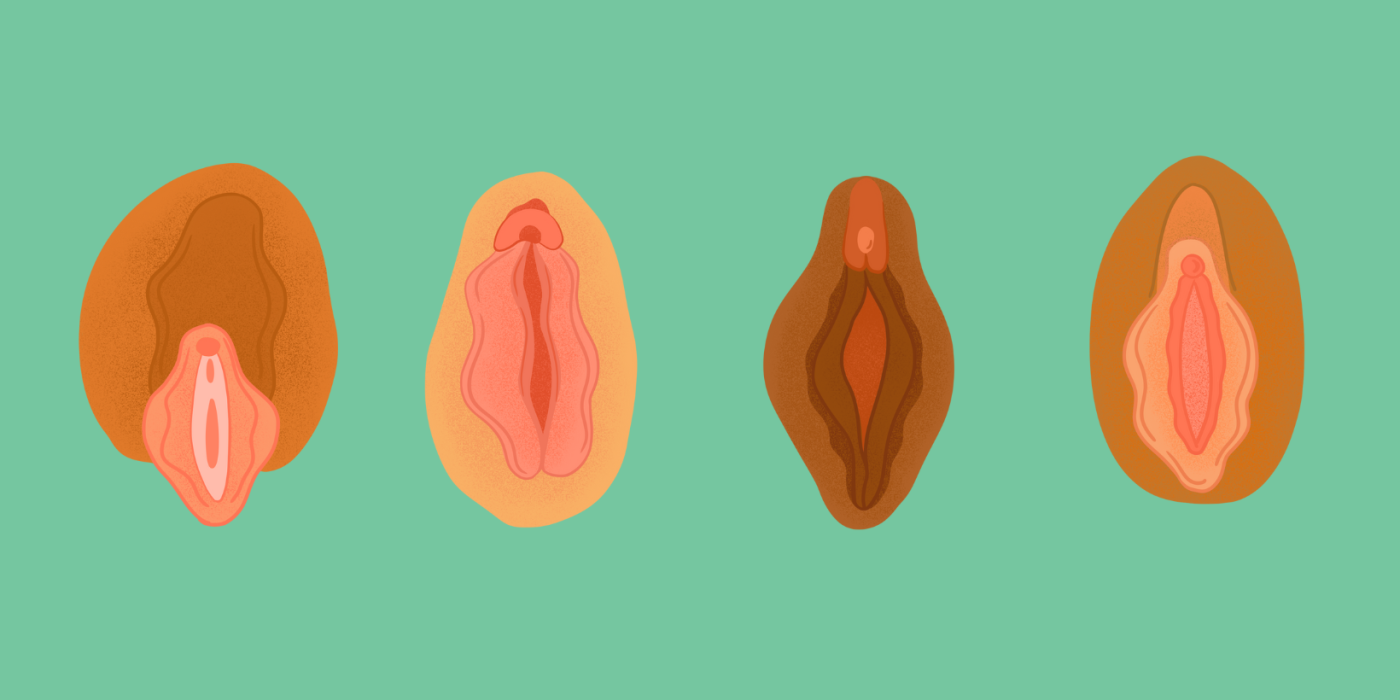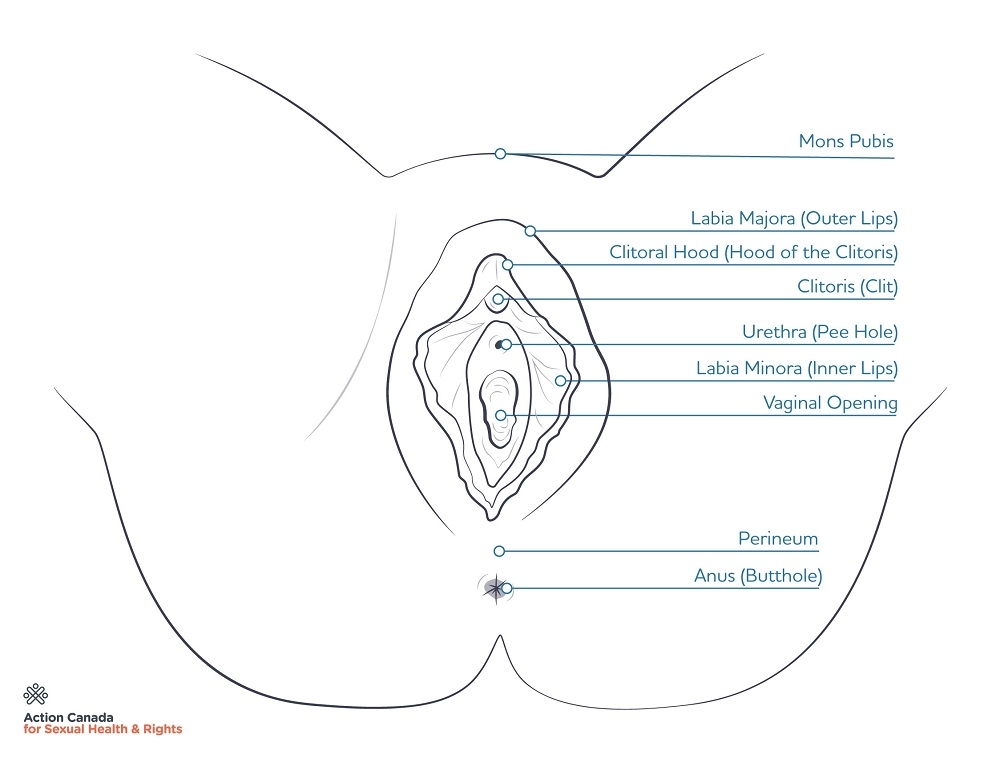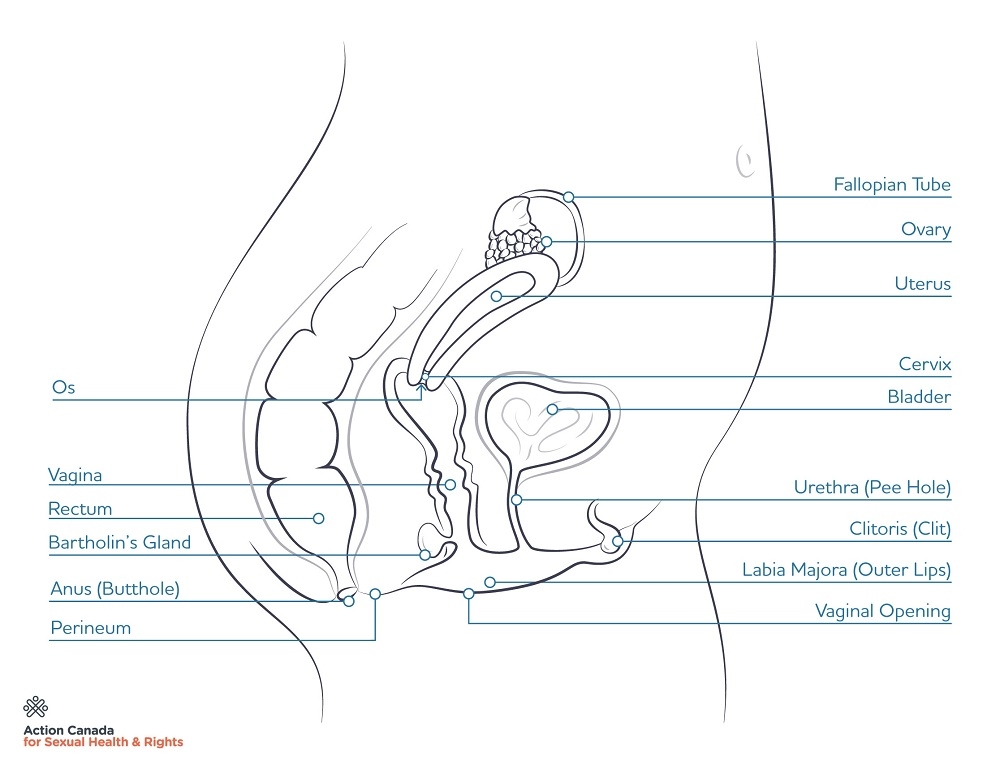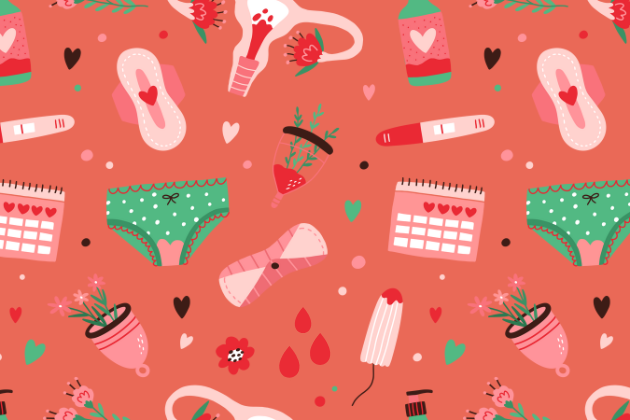See below for definitions and diagrams for bodies that have vulvas and vaginas. These are just one representation of what bodies can look like. Everyone's body is different in its own way.
Note: We have used words for body parts that you may not use or relate to in the same way. We have used these words as they are commonly known and encourage you to use the language that feels best for you.
We all use different words! You may have also heard this body referred to as a hoo ha, coochie, pussy, vajayjay, beaver and/or kitty.
Outer Bits - The Labia, Clitoris, And Urethra
The vulva refers to the whole genital area, which includes the labia majora (outer lips), labia minora (inner lips), the clitoris, the urethra and vaginal opening.
Note: lots of people don’t know that this is called the vulva, and use the term “vagina” to refer to everything “down there”!
Vulvas come in all shapes, forms, and colours. Everyone’s genitals are unique, and will look different – some are brownish-black, some are pink, some are hairy, some aren’t, some people’s inner lips are visible or uneven, some aren’t, some people have a hymen, some people don’t. The labelled diagrams on this page are meant to help identify different parts of reproductive organs. Below is an illustration of some of the different ways vulvas can look.

Labia (lips)
There are two sets of labia, or lips, on a vulva: the labia majora (outer lips) and labia minora (inner lips). The labia minora (inner lips) look like stretchy fleshy folds that surround and protect the clitoris, the opening of the vagina, and the urethra.
Clitoris
Also known as the clit, it sits above the vaginal opening at the end of the inner labia,under the clitoral hood. The clitoris is a super dense bundle of nerve endings running both inside and outside the body, making it very sensitive and can provide pleasure when stimulated. Lots of people think of the clitoris only refers to the bump that is visible above the vaginal opening, but it actually extends into your body and has two thick legs that run back and down under the skin on each side of the vulva (meaning you can stimulate the clitoris from within the vagina, too).
Urethra
The urethra is the long inner tube that brings pee from the bladder and out through the urethral opening. The urethral opening is located just below the clitoris, above the vaginal opening – it looks like a tiny hole.
Hymen
The thin layer of skin that can surround or partially cover the vaginal opening. You may experience your hymen “breaking” when you first experience vaginal penetration or use tampons for the first time, resulting in some bleeding and pain. However, you may never experience this, because your hymen skin is stretchy, breaks without you noticing, or you don’t have one.

Note: Some people may have their clitoris, clitoral hood or labia removed or altered.
Inner Bits - The Vagina, G-spot, Cervix, Uterus, And More!
Inside the body is a whole network of parts and organs that are involved in sexual health. Check below to learn more about the parts we can't easily see.
Vagina
The vaginal opening is the hole on the outside of the body that sits in between the urethra (pee hole) and anus. An internal tube runs from the vaginal opening to the cervix. The vagina can be used for penetrative sex, including sex that can lead to pregnancy. The vagina is where menstrual blood leaves the body and also where babies exit the body (if they are born vaginally). Everybody’s vagina is different when it comes to length, width, and stretchiness. Length and stretchiness also varies during a person’s menstrual cycle.
G-spot
The G-spot, scientifically known as the Grafenburg spot, is a patch of tissue that reaches the internal part of the clitoris. It sits a few inches inside the vagina (towards the belly-button). For some people, when the G-spot is stimulated, it can lead to strong sexual arousal, powerful orgasms, and, sometimes, to ejaculation.
Cervix
The cervix is the opening of the uterus and looks like a small donut with a small hole in the middle. It sits at the very top of the vagina (if you’re standing upright) and controls movement in and out of the uterus. Some people can touch their cervix with their fingers, while others cannot, depending on the length of their vagina. The cervix lets menstrual blood out during menstruation and sperm in when a sexual partner ejaculates into the vagina.. It also thins and stretches open during birth to allow a baby to leave the uterus and be born.
Uterus
A muscular organ that is also called a womb. It’s the part of the reproductive system where a fetus grows during a pregnancy until it is ready for birth. The uterus is about the size of a closed fist and shaped like an upside-down pear. It has thick muscular walls that stretch during pregnancy.
Ovaries
Two small, almond-sized pouches that hold eggs (ova) and produce hormones such as estrogen, testosterone, and progesterone. The ovaries release one egg per month though occasionally they will release more than one egg.
Fallopian Tubes
Two narrow tubes that link up the ovaries and the uterus. The eggs that are released by the ovaries every month travel down these tubes to reach the uterus. Sperm can also travel up the fallopian tube, where it can fertilize the egg.

Taking Care of Your Vulva
Here are a list of general tips to maintain a healthier vulva and vagina:
- Your vagina doesn’t need any special soaps, cleaners, or douches. You can just use your hands and warm water with a gentle soap to wash your vulva. Scented products can have irritating chemicals. Try using unscented soaps, menstrual products, and toilet paper if your vulva is dry or irritated.
- Wiping from front to back helps avoid getting bacteria from your anus to your urethra. If bacteria gets into the urethra, it can cause a urinary tract infection.

